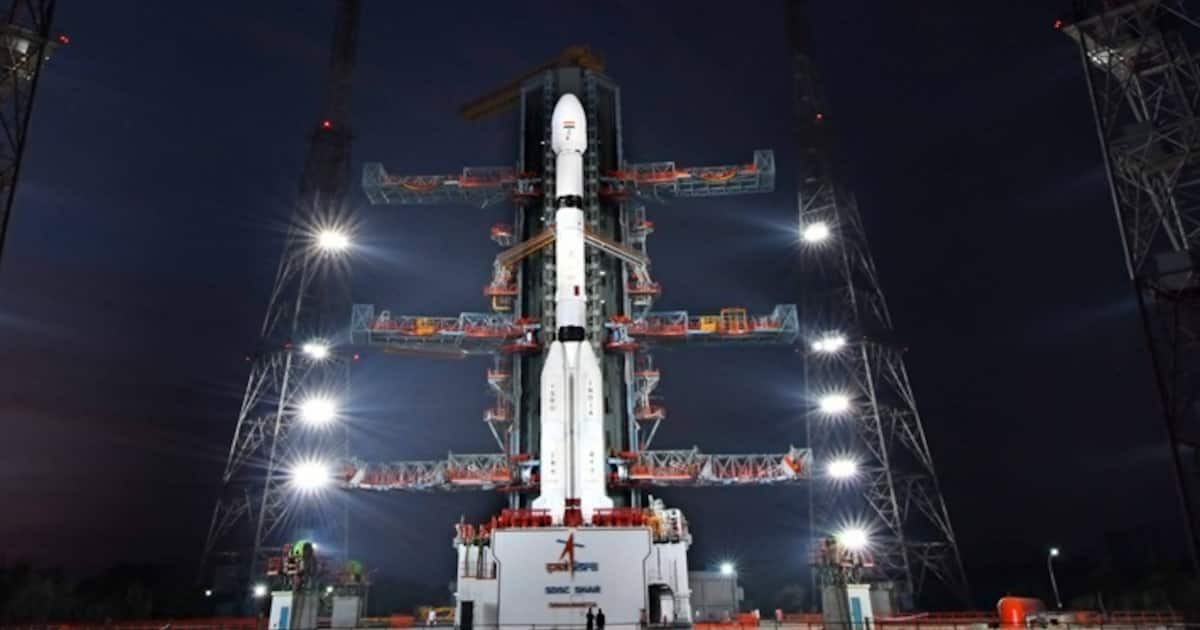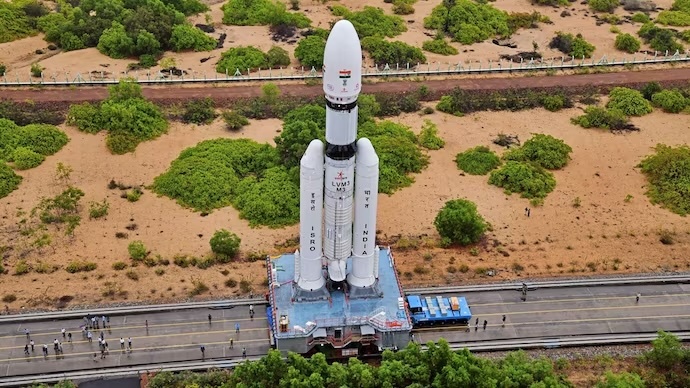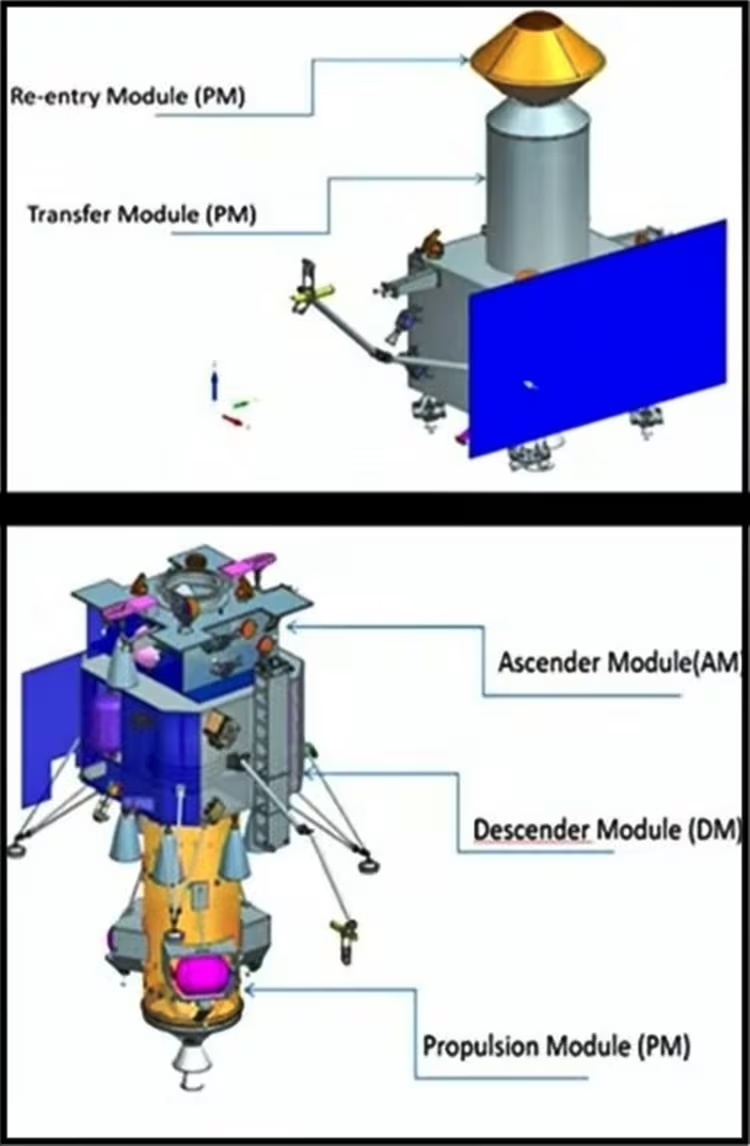29.02.2024

Bengaluru. After the historic success of Chandrayaan-3 mission, India’s space agency ISRO (Indian Space Research Organization) is now preparing to send Chandrayaan-4. Chandrayaan-4 will be sent in 2028. Rocks will be brought from the Moon by this mission.
ISRO’s Space Application Center scientist Dr. Nilesh Desai has told an English news website that the next mission Chandrayaan-4 will be launched in 2028. It has been named LUPEX Mission. ISRO’s Chandrayaan-3 mission has achieved unprecedented success. Chandrayaan-4 will be sent to further its achievements. If it is successful, India will be the fourth country in the world which will have the capability to bring samples from the lunar surface.
ISRO plans to send humans to the moon by 2040. Nilesh Desai said, ‘We have the next 15 years to put a man on the moon.’ Chandrayaan-4 will also be landed near the south pole of the Moon. From here the rock sample will be brought to earth so that it can be studied in detail. This will reveal what kind of resources (like water) are there on the moon. This will help in creating human settlement on the moon in future.
Chandrayaan-4 will carry a 350 kg rover
Chandrayaan-4 will carry a rover weighing 350 kg. It will be able to explore greater distances than the rover sent with Chandrayaan-3. The lander will investigate the dangerous edges of lunar craters. This area is still unknown. Chandrayaan-4 will probably be launched from India’s heavy-lift GSLV Mk III or LVM3 rocket. The success of the mission depends on safely retrieving the samples and returning them to Earth. It is extremely challenging technically. This will require two launches. The first launch will be from the Earth towards the Moon and the second from the Moon towards the Earth.
Also read- India’s space station will be in space by 2035, will send humans to the moon, read the highlights of PM’s speech
The landing of Chandrayaan-4 will be like that of Chandrayaan-3. Its central module will return after docking with the orbiting module. It will separate above the Earth and re-enter the atmosphere. It will drop samples to Earth. ISRO has already demonstrated a hop experiment with Vikram. It shows that ISRO’s spacecraft can lift off from the surface of the Moon.
Quelle: Connexionblog
----
Update: 8.03.2024
.
Chandrayaan-4 will be launched in two phases, both LVM-3, PSLV to be used
The mission will not be launched in a single phase like its predecessor, instead, two separate launches will push vehicles that will not only land on the Moon but also return rocks and soil to India.

The Indian Space Research Organisation (Isro) after its historic success with the Chandrayaan-3 mission is already gearing up for the next lunar mission named Chandrayaan-4.
The mission will not be launched in a single phase like its predecessor, instead, two separate launches will push vehicles that will not only land on the Moon but also return rocks and soils (lunar regolith) from the lunar surface to India.
While Chandrayaan-3 consisted of three main components - lander, rover and the propulsion module, the Chandrayaan-4 mission will have two more additional components tasked to return the samples from the Moon and drop them on Earth.
CHANDRAYAAN-4 COMPONENETS
The Chandrayaan-4 components will consist of five spacecraft modules, according to a presentation by Isro chief S Somnath at the National Space Science Symposium. The five modules will be:
* Propulsion Module: Similar to Chandrayaan-3, the propulsion module will guide Chandrayaan-4 in lunar orbit, before separating.
* Descender Module: This module will make the lunar landing, similar to the Vikram lander on Chandrayaan-3.
* Ascender Module: Once the samples are collected and stored, the ascender module will eject from the lander and begin returning to Earth.
* Transfer Module: It will be responsible for grabbing the ascender module and getting it out of lunar orbit. It will journey back to Earth before the capsule with the rock and soil samples detach.
* Re-entry Module: This will be the capsule carrying the lunar regolith that will land on Earth after a return journey from the Moon.

TWO SEPARATE LAUNCHES
The five components of the Chandrayaan-4 mission will not be launched together. According to Isro Chief, India's heaviest launch vehicle LVM-3 will launch with three components, which will include the Propulsion Module, the Descender Module and the Ascender Module.
This will be a similar launch to the Chandrayaan-3 mission in 2023.
The Transfer Module and the Re-entry Module will be launched aboard a Polar Satellite Launch Vehicle (PSLV). Isro is yet to reveal finer details as to which launch will be the first.

This will, however, be the first such mission involving two launch vehicles aimed at completing a single mission.
Chandrayaan-4 aims to build on the accomplishments of the recently concluded Chandrayaan-3 mission while attempting more complex objectives. If successful, Chandrayaan-4 will make India only the fourth nation to bring back samples from the lunar surface.
Quelle: INDIA TODAY

